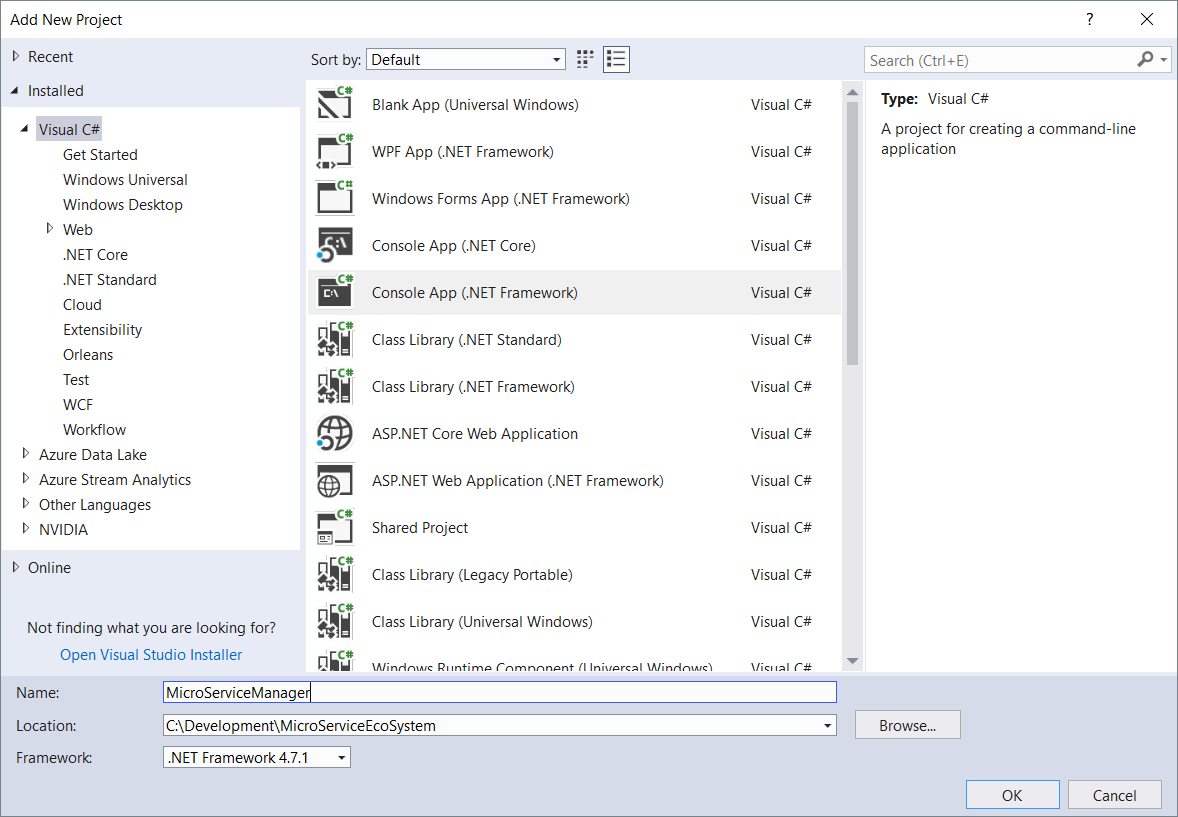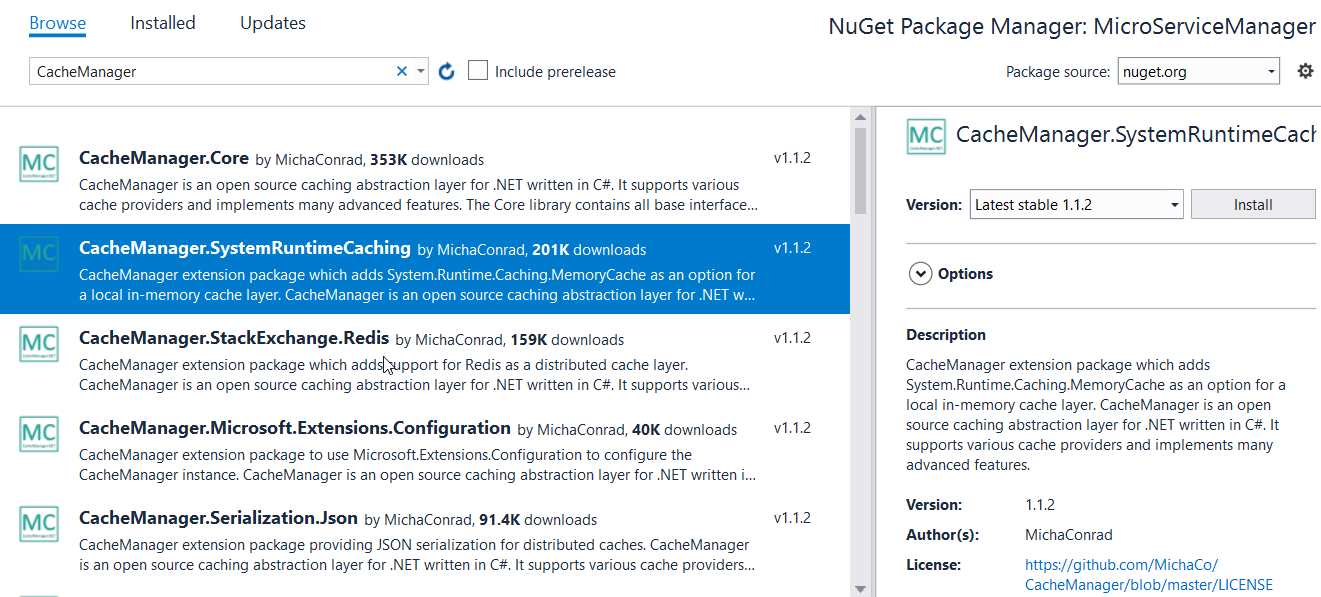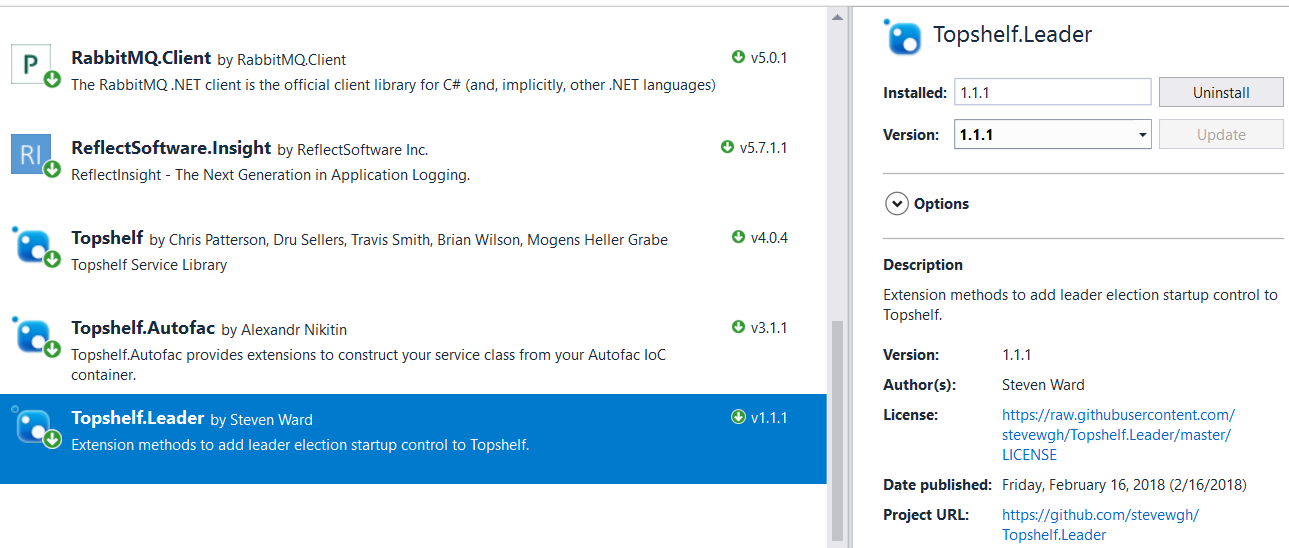Installation
Our first task is to create our console application, as we have done with every microservice. We will do so as shown in the following figure:

Once the project is created, we need to install our NuGet packages for use. In this case, we are going to install and use a great open source package that is perhaps one of the most useful and easiest caching mechanisms I've used, CacheManager. This product will help us to store information when and where we need it, and has numerous types of runtime processing:

Installing Topshelf.Leader:

Our code
Before we get started, we should look at the biggest and baddestmain.cs we've done so far. Nothing but the best for our manager, right? Refer to the following code to see what we have done:
static void Main(string[] args)
{
var builder = new ContainerBuilder();
// Service itself
builder.RegisterType<MSBaseLogger>()?.SingleInstance();
builder.RegisterType<MicroServiceManager>()
.AsImplementedInterfaces()
.AsSelf()
?.InstancePerLifetimeScope...
























































